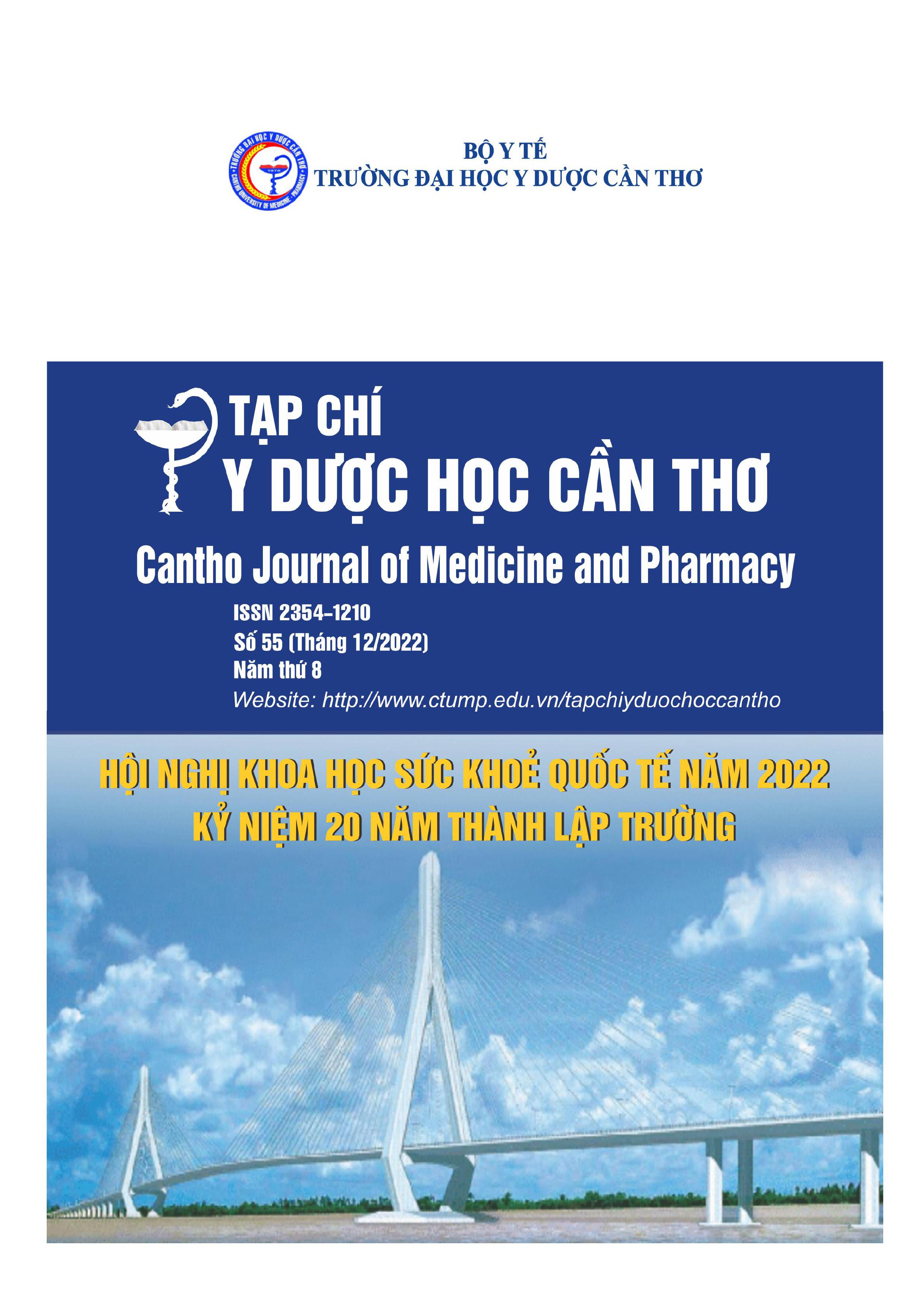ASSESSMENT OF REPRODUCTIVE HORMONE BY NON-INVASIVE METHODS IN ANIMAL MODELS, CASE OF COMMOM PALM CIVET (Paradoxurus hemarphroditus)
Main Article Content
Abstract
Background: Accurate assessment of endocrine status is one of the most important factors to increase the effectiveness of assisted reproductive programs. This study aims to monitor reproductive hormones in civets to contribute to species conservation. Objective: To evaluate changes in testosterone of male civets, estradiol, and progesterone of female civets. Materials and methods: Collecting stool samples from civets, using the Enzyme Immunoassay (ELISA) method to determine hormone levels by sex and age. Results: The study determined the testosterone hormone levels in civets by sex and age, and the estradiol and progesterone levels in pregnant and non- pregnant female civets. In adult males, the FTM concentration was 9.57±2.16 μg/g df (April); 5.32±1.52 μg/g df (July); 10.25±2.36 (December). Fecal E2 concentrations in non-pregnant civets ranged from 0.05 to 7.01 μg/g df, mean of 1.07±0.84 μg/g df and a peak was 3.22±0.64 μg/g DF. During pregnancy, the level of P4 in the feces of civet civets ranged from 6.21 to 23.12 μg/g df; the average is 15.17±5.22 μg/g df. Conclusions: The results demonstrate that hormone testing in fecal samples is a reliable non-invasive method for monitoring testicular and ovarian activity in civets. Hormone monitoring will facilitate conservation breeding programs of civets in Vietnam and other parts of the world, and serve as a scientific basis for similar studies in animal models, aimed at monitoring steroid hormone metabolites in humans.
Article Details
Keywords
Civets, Elisa, estradiol, progesterone, non-invasive, testosterone.
References
2. Brown J., (2011), Female reproductive cycles of wild female felids, Animal Reproduction Science, 124, pp.155–162.
3. Frederick C., R. Kyes, K. Hunt, D. Collins, B. Durrant, S.K. Wasser (2010), Method of estrus detection and correlates of reproductive cycle in the sun bear (Helarctos malayanus). Theriogennology 74: pp.1121-1135.
4. Goymann W., (2005), Noninvasive monitoring of hormones in bird droppings: physiological validation, sampling, extraction, sex differences, and the influence of diet on hormone metabolite levels. Ann. N. Y. Acad. Sci. 1046: pp.35–53.
5. Kumar A., S. Mehrotra, SS. Dangi, G. Singh, S. Chand, L. Singh, AS. Mahla, S. Kumar and K.Nehra (2013), Faecal steroid metabolites assay as a non-invasive monitoring of reproductive status in animals, Vet World, 6 (1), pp.59-63.
6. Neema, R., K. Vinod, K. Suneel, R. Upashna, U. Govindhaswamy (2016), Non-invasive monitoring of reproductive and stress hormones in the endangered red panda (Ailurus fulgens fulgens), Animal Reproduction Science, 172: pp.173–181
7. Nguyen Thi Thu Hien, Nguyen Thi Phuong Thao, Nguyen Thanh Binh (2017), Reproductive characteristics of civets (Paradoxurus hermaphroditus Pallas, 1777) in captivity. Proceeding of the 7Th national scientific conference on ecology and biological resources. Vietnam. Pp.694-701.
8. Nguyen Thi Thu Hien, Nguyen Thi Phuong Thao, Nguyen Thanh Binh (2018), A non-invasive technique to monitor reproductive hormone levels in common palm civets, Paradoxurus hermaphroditus Pallas, 1777. Academia Journal of Biology 40(3): pp.74–81.
9. Palme, R., S. Rettenbacher, C. Touma, S.M. El-Bahr, E. Mostl (2005), Stress hormones in mammals and birds: comparative aspects regarding metabolism, excretion, and noninvasive measurement in fecal samples. Ann. N. Y. Acad. Sci. 1040: pp.162– 171.
10. Putranto H. D. (2011), A non-invasive identification of hormone metabolites, gonadal event and reproductive status of captive female tigers, Biodiversitas, 12 (3), pp.131-135.
11. Putranto H.D., S. Kusuda, Y. Mori and K.O. Inagaki (2006), Assessment of ovarian cycle by fecal progesterone and estradiol-17 β in exotic cat, Proceedings of AZWMP Chulalongkorn Uni.Fac. of Vet. Sc., pp.26-29.
12. Pribbenow, S., M.L. East, A. Ganswindt, A.S. Tordiffe, H. Hofer, M. Dehnhard, (2015), Measuring faecal epi-androsterone as an indicator of gonadal activity in spotted hyenas (Crocuta crocuta). PLoS One 10, e0128706
13. Susanne, P., W. Bettina., L. Carsten, W. Annika, D Martin (2016). Validation of an enzyme- immunoassay for the non-invasive monitoring of faecal testosterone metabolites in male cheetahs (Acinonyx jubatus); General and Comparative Endocrinology, 228: pp.40–47
14. Terio, K.A., L. Marker, L. Munson (2004), Evidence for chronic stress in captive but not free- ranging cheetahs (Acinonyx jubatus) based on adrenal morphology and function. J. Wildl. Dis. 40: pp.259–266.


